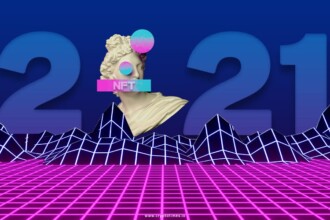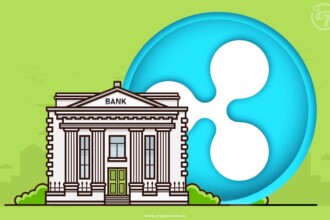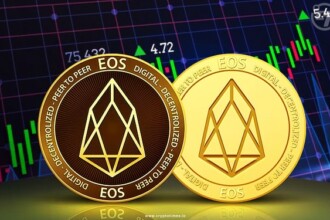Launched in 2017, Cardano has become one of the most popular blockchain in the cryptocurrency space. It has been well positioned among top blockchain networks like Ethereum, Solana, BNB Chain since the past few years.
However, where it finds people’s interest is that Cardano is a top blockchain network despite being a developing project. To add to that, Cardano does not have any significant traction or any popular dApp launched. So the question arises: why is it a top blockchain?
Let’s find out the answer in this article and explore the strengths of Cardano. We will also examine how it compares and could potentially outpass other major blockchains in the crypto ecosystem.
What is Cardano?
Cardano is a decentralized blockchain platform that enables to launch smart contracts, cryptocurrency tokens and various other decentralized applications (dApps). Founded by Charles Hoskinson – one of the co-founders of Ethereum – Cardano is built to overcome limitations found in early-generation blockchain networks like Bitcoin and Ethereum.
Since its inception, Cardano has aimed to create a more secure, scalable, and sustainable blockchain infrastructure with an ultimate aim to achieve maximum transaction per seconds (TPS) possible.
Cardano uses a tailored proof-of-stake (PoS) consensus mechanism known as Ouroboros for security. It has a native cryptocurrency called ADA which empowers different onchain utilities like staking, paying transaction gas, voting in governance and more. ADA has gained significant popularity and grown in both value and market presence over the time. According to data from Coinmarketcap, ADA is currently the 10th largest crypto asset with a market of $14.2 billion.
Key Features That Make Cardano Stand Out
1. Proof-of-Stake Consensus (Ouroboros)
Cardano uses a customized Proof-of-stake (PoS) consensus that is much more efficient, unlike Bitcoin’s proof-of-work (PoW) model that consumes heavy electricity. This allows Cardano to maintain security without the massive energy consumption associated with traditional mining. Participants in the network can stake their ADA tokens to validate transactions and create new blocks, making the system eco-friendly and scalable.
2. Layered Architecture
Cardano’s architecture is unique as it separates its network into two layers:
- 1. Cardano Settlement Layer (CSL) which is responsible for transaction settlements using ADA and
- 2. Cardano Computation Layer (CCL) which handles smart contracts and decentralized applications (dApps). This layered approach improves flexibility and ensures that any future updates or changes can be made without disrupting ongoing transactions.
3. Research-Driven Development
Cardano takes a scientific approach with its each feature undergoing peer-reviewed research before the final implementation. This rigorous process ensures that future updates are thoroughly tested and reliable. While this has caused slower development in comparison to some faster-moving blockchains, it has also made Cardano a highly secured blockchain with a strong focus on long-term viability.
4. Scalability and Sustainability
Scalability is a major issue for first generation blockchain networks like Bitcoin and Ethereum, where high usage often leads to slower transaction speeds and increased fees. Cardano addresses this issue with its Hydra solution – a layer 2 scaling rollup aiming to achieve over 1 million TPS. This novel and innovator project enables parallel transaction processing and dramatically improves network’s throughput as demand increases. Such development makes Cardano future-proof and ready to handle large-scale adoption.
Cardano vs. Other Blockchains
While Cardano offers significant advantages, how does it stack up against other popular blockchain networks like Ethereum, Solana, and Polkadot.
Cardano Vs Ethereum
Ethereum – the second-largest and pioneering smart contract blockchain by market cap – is the most direct competitor to Cardano. While Ethereum has a first-mover advantage and a massive ecosystem, it is often found struggling with high gas fees and scalability issues. Although Ethereum’s 2.0 shift is making it efficient, it still could face various challenges for broader adoption. This is where Cardano gets benefits as its layered architecture, thoroughly reviewed implementations, and other key developments puts it above Ethereum and other blockchains.
Cardano Vs Solana
Solana is often referred to as a high-speed alternative to Ethereum. It uses a unique consensus known as proof-of-history (PoH) mechanism which is combined with proof-of-stake to inherit robust security. The PoH consensus enables Solana to process thousands of transactions per second. While Solana has focused more on offering low-cost and high speed transactions, Cardano prioritizes security and decentralization over speed.
Cardano Vs Polkadot
Polkadot is focused on scalability and interoperability. It enables different blockchains to communicate with each other through its unique relay chain model. While Polkadot excels at connecting diverse blockchains, Cardano focuses on a sustainable and secure PoS model. Its peer-reviewed methodology gives an edge in long-term reliability which Pokadot lacks.
Cardano Ecosystem
Cardano has been steadily building its ecosystem of decentralized applications and developer tools. With the implementation of Alonzo hard fork, Cardano introduced smart contract capabilities in 2021. This development opened the doors for a variety of decentralized finance (DeFi) applications, NFT platforms, and other dApps to flourish within the Cardano ecosystem.
It also has projects like SundaeSwap – a decentralized exchange (DEX) – and Meld – a decentralized lending protocol – that demonstrate Cardano’s growing DeFi ecosystem. As more projects launch on Cardano, its position in the blockchain landscape will continue to strengthen.
Top Challenges for Cardano
While Cardano’s deliberate and research-based development approach is an advantage, it also presents significant challenges. One major issue with Cardano is slower development pace which has left some users frustrated. Whereas faster-moving networks like Solana, Avalanche and Ethereum continue to expand their ecosystems rapidly. Adoption also remains a key hurdle for Cardano and in solution, it needs to attract more developers and users to fuel growth of the platform.
Moreover, competition in the blockchain space also remains fierce as more and more projects are being launched on a regular basis. Ethereum has the largest developer community while Solana and Avalanche continue to attract attention for their speed and low cost transactions. To maintain its position among these leading blockchain projects, Cardano needs to move faster with its technological advancements.
Why Is Cardano a Top Blockchain?
While looking at sustainability, security, and academic research for development approach – Cardano is undoubtedly a top blockchain network. Its focus on environmental impact through PoS, layered architecture, and long-term scalability sets it apart from many of its competitors.
However, in terms of ecosystem development – Cardano still has room for growth compared to that of Ethereum and Solana. Its long-term potential is enormous but only time will tell if it can overcome the competition and claim the title of the top blockchain. Many people currently believe that Cardano is overrated and its position in top 10 crypto projects is not viable. That is also true as many blockchain with vibrant ecosystems are far behind in the list of top blockchain networks.
Conclusion
Cardano may not yet be the top blockchain project in every aspect but it is certainly in place to play a key role in the future of blockchain landscape. Its commitment to innovation and security makes it one of the most exciting projects in the blockchain space. It has potential to rise and become a top blockchain network in the coming years.
Keep Reading:
Cardano Chang Hard Fork: All You Need To Know About This Upgrade







